How impressive a product or otherwise depends on the expectations of the user, which is influenced by past experiences and shaped by a benchmark provided by similar items. It’s relativism. This writer is no psychic, and has no contact with jurors on the European Car of the Year panel, but I think that’s what won the new Peugeot 308 the 2014 ECOTY gong.
The previous Peugeot 308 (new model = new number game not sustainable) wasn’t the best car in class at its prime, far from it, although a few aspects (for me, classy cabin design and torquey turbo engines) were good. The T7 didn’t age well either with that big mouth – partly fixed with the facelift – and even bigger behind, while renewed rivals came in along the way to further rub salt into the wound, showing up the 308’s uncompetitiveness.
It was begging to be put out of service and Peugeot finally did so in late 2013 with this car. Plenty of catching up to do, but the sharp-suited T9 has had a flying start and appears well equipped for the top. We drive the new 308 in Le Touquet, France, to see if there’s substance beneath the sheen.
The new 308, first shown to the world at Frankfurt 2013, couldn’t look more different from its predecessor even if it wanted to. Much of the improved outlook stems from the proportions – the new 308 is 23 mm shorter overall than before, but its wheelbase is 12 mm longer, the corresponding reduction in front overhang obvious to the naked eye. Even more significant is the 41 mm lopped off the roofline. You would have to own one to miss the bulbous MPV-esque shape of old.
The 308 fights the Volkswagen Golf, Ford Focus, Opel/Vauxhall Astra, Renault Megane, Honda Civic Euro, Mazda 3 Hatchback and Hyundai i30 in the European family car market, but the Peugeot’s styling inspiration is clearly from the VW. That’s no bad thing, for the Golf is an institution, an icon that, like the Porsche 911, can afford to evolve with time. The Mk7 Golf also leads the sales charts, so if that’s where the 308 wants to be, then it should dress appropriately.
Fortunately, Peugeot’s newfound restraint is decorated with just enough jewellery to avoid boring accusations. The black-bezel headlamps feature prominent projectors, a stepped lower section and LED daytime running lights as eyebrows, the latter formed by a row of individual diodes.
The 18-inch ‘Saphir’ alloys you see on this white car are an arresting sight; ditto the signature triple-claw LED graphics within the tail lamps, which themselves look like claws. I’m digging this new design – it looks ‘solid’ and refined, but with flair touches in the right places to avoid looking as sombre as a Golf. By not sticking out too much, it should age better, too. Malaysian-spec cars don’t always look like the best specimens paraded at international press drives, but in this case you’ll get what you see, sexy wheels included.
Not just a reskin, the 308 is underpinned by a PSA’s new EMP2 platform, which is also used by the Citroen C4 Picasso MPV. The Efficient Modular Platform is 70 kg lighter than the old 308’s PF2 platform.
The reduction can be broken down to 27 kg from the use of select steels (‘very high’ and ‘ultra high strength’ steel), composite materials and aluminium; 10 kg thanks to the assembly processes (laser welding, hydroforming) and 33 kg through design (lighter modules, different sizing of certain parts according to power).
Platform aside, the design and the choice of lighter materials contributed to a further 70 kg reduction. Examples include aluminium for the bonnet and front wings, redesigned seat frames (less >10 kg) and a thermoplastic tailgate (like the new Nissan X-Trail, this should not be equated to lower quality or safety) that saves four kilos. Combined, 140 kg is a pretty substantial weight loss; think two medium sized adults.
We sampled two engines in France – the 1.2 litre PureTech three-cylinder petrol and a 2.0 litre BlueHDi four-cylinder diesel. The oil burner is a known quantity, its low-end thrust enough to wake up the drowsy, if not the dead. It’s pretty oversized in the a class where 1.6 diesels are the norm, so the 2.0 HDi’s 150 hp/370 Nm is more than enough, most of the time. Rattly nature and slight lag from take off aside, the flexibility on offer makes it a relaxing car to drive fast.
The diesel was paired to a six-speed torque converter automatic, and we’re pleased to report that the Aisin-sourced gearbox is a smooth operator with no need to DIY. After years of disappointment in this department, an automatic Peugeot that doesn’t frustrate is noteworthy.
Of more interest to you and me is the three-pot turbo, which we tried in top 130 hp tune, mated to a six-speed manual gearbox. Like Ford’s award winning 1.0 litre EcoBoost, the EB Turbo PureTech 1.2 aims to deliver the performance of a bigger engine without the associated fuel consumption and emissions, which are 21% lower than a larger engine with equivalent power and driveability, Peugeot says.
The compact and light Trémery-made Euro 6 engine features high pressure direct injection (200 bar) and an high-efficiency turbocharger running at 240,000 rpm. Maximum torque of 230 Nm is reached at 1,750 rpm, and 95% of that urge is available between 1,500 and 3500 rpm.
That’s mighty impressive, and if you need context, the old car’s normally aspirated, four-cylinder 1.6 VTi made 120 hp and 160 Nm while being 25 kg heavier. The PureTech 1.2 has also got Ford’s 998 cc EcoBoost (125 PS, 170 Nm from 1,400 to 4,500 rpm) covered, and has 10 Nm more than BMW’s 1.5 litre triple in the MINI Cooper (136 hp/220 Nm).
Now how does that on-paper promise transfer to on-road action? As I expected, which is to say that it was great. There’s good response and no noticeable lag as you plant your foot down, and strong low-end urge means that you’ll fast forget that it’s a 1.2 litre three-pot. Coming from the diesel, this one needs some revving to get going, but it’s smooth and up for it. No refinement complaints on the move, despite audible direct injection clatter from the outside.
A zero to 100 km/h time of 10.3 seconds (manual, 18-inch wheels) may sound unexciting, underwhelming even, but the 1.2 always feels eager and faster than the bald figures suggest. A big contributing factor is the six-speed manual our test car came with. A stick shift never fails to add verve and involvement to a drive, and that’s the case here, although the throw is a little long and the gear knob (as found in the 208 GTi) too big, too shiny and too plasticky for my liking.
This is a fantastic drivetrain combo – small turbo engine and a stick shift – that got me thinking “this is all the car I need.” The last time such a thought floated across my mind, I was freezing my nuts off in Iceland driving the Mk6 Golf with the 1.4 Twincharger engine. No coincidence.
Our test unit was fitted with a Driver Sport Pack, which comes with a Sport button next to the push start button. Press it and the dials turn red, the MID introduces new readings (power, torque, boost pressure, g-force) and you’ll be shocked by a digitally amplified engine sound that’s loud and rorty. The audio visual stimulation is accompanied by heavier steering and a sharper throttle. We found it amusing, for all of five minutes. Local cars won’t have this and it’s no big loss.
Just like how the engine’s natural sound is good enough, so is the steering. The thick-rimmed, small-diameter steering wheel is light and fast, and it gives the 308 quick feet in an urban setting. Thankfully, the helm gains weight at higher speeds for stability. Not much feedback is given at all times, so if anything, we’ll have more communication instead of the Sport button’s extra dose of weight.
We drove on 17-inch wheels most of the time and found the 308’s ride to be pliant, from the motorway to cobbled village streets and the B-roads in between. Like the auto ‘box, a Peugeot that rides decently is quite a novelty, but it has to be said that the roads we drove on were pretty smooth, and a local drive is needed to find out how the 18-inch rims and rubber band tyres deal with Malaysian tarmac.
Dynamically, this 308 is miles ahead of the wooden old car, and there’s fluency in the way it flows down a B-road that was missing before. It still has a rear torsion beam but gone is the hop-happy unyielding rear end of the T7. Perhaps not quite as faultless as that German all-rounder, but it’s a big improvement for Peugeot.
The solid impression continues in the cabin, which features quality materials and high design. Fresh thinking is apparent in this reinvention of the wheel, with Peugeot’s i-Cockpit taking centrestage. Not loved by all, this floating ‘head up’ instrument panel-low steering layout, but it did not pose any ergonomic challenges to this 175 cm driver. Try it first before you love or hate.
The minimalist centre stack has to be the one of the most bare ones I’ve seen, a complete opposite of what Ford did for the Focus. Just one row of physical buttons and no central command knob means that one will have to use the touch screen (9.7-inch, high res, angled towards driver) for everything.
It’s a little extreme in my view, especially when one has to repeatedly jab a finger at the screen just to adjust the air con, but there’s a price to pay for style, I guess. An iDrive-style controller would be the best balance between minimalist style and ease of use, and Mazda has struck that.
There’s no arguing that the 308’s cabin feels premium, though. Avant-garde design is backed up by top-section plastics that are solid yet yielding to the touch, with the right amount of metallic trim garnishing for contrast. That big slab of brushed metal framing the gear area is also very tasteful. It could be the added width at play, but the i-Cockpit works better here than in the 208.
A final note on the leather-alcantara seats that we’ll be getting. They’re as supportive as they are stylish (three stripes down the middle, didn’t get to try the massage function), but it’s snug at the back, or tight if you’re using the Asian C-segment sedan measuring tape. This urban explorer has a thing for full-length glass roofs and their ambience-transforming superpower, and so do the French I suspect, because they never fail to oblige on this count.
The new Peugeot 308 is a good car, but the feat is made all the more substantial by relativism. The progress made from the previous-gen is nothing short of a quantum leap, and that’s why the Pug topped my list of the most impressive cars of 2014.
The new Peugeot 308 is now in Malaysian showrooms and will be officially launched next week. Watch this space for the launch report and local test drive report of our sole 1.6 litre THP 150 variant.
Peugeot 308 1.6 THP 150, Malaysian-spec
Looking to sell your car? Sell it with Carro.

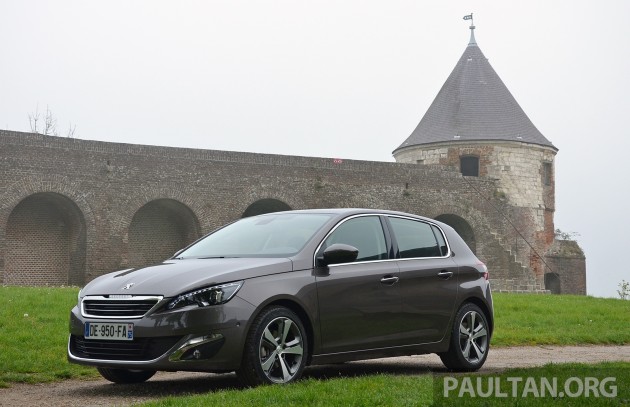
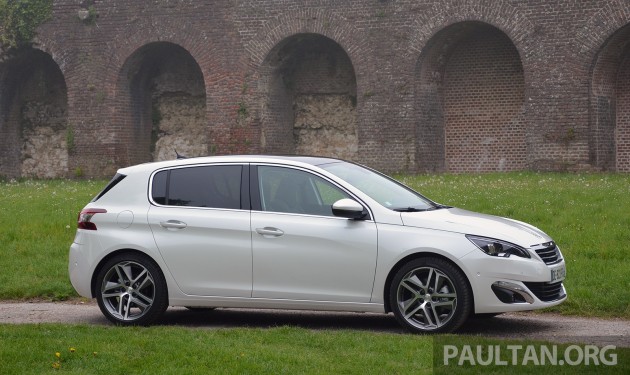
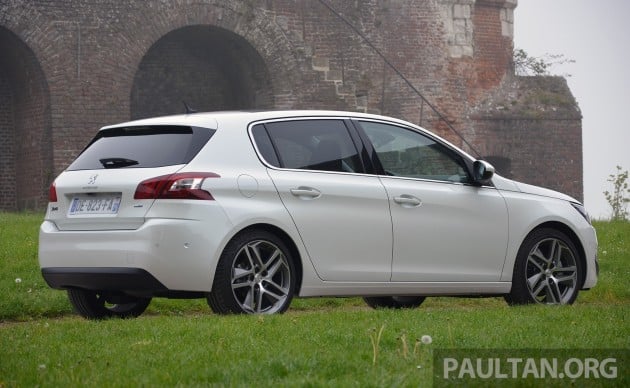










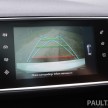
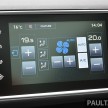
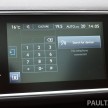
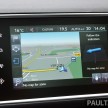
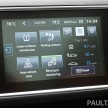


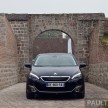











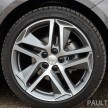

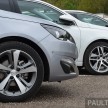

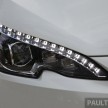

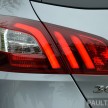

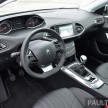
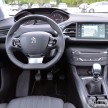
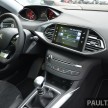
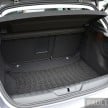
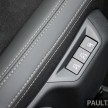
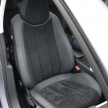
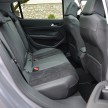

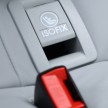
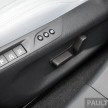
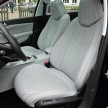
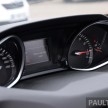
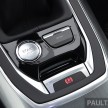
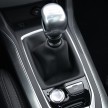
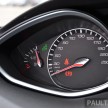
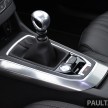
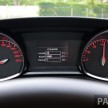
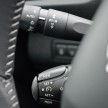
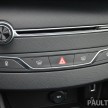
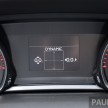
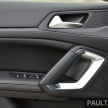
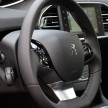
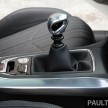
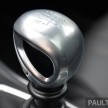
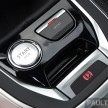
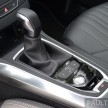
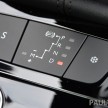
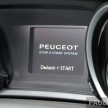


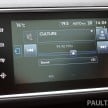
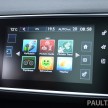





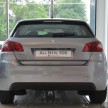
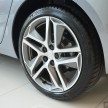
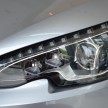
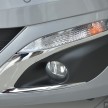
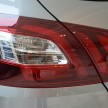
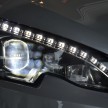

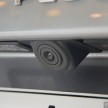
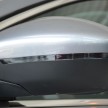

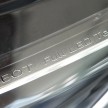
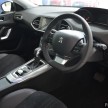
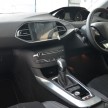


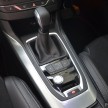
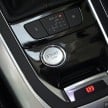
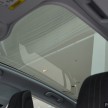
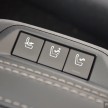
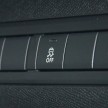
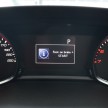

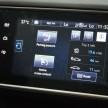
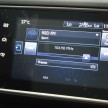
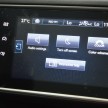
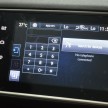
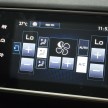
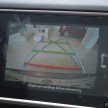
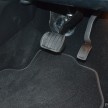
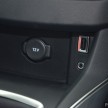
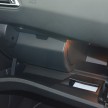
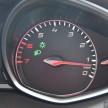
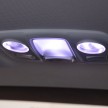
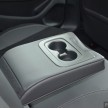
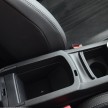
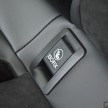

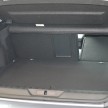
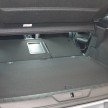
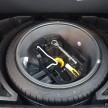
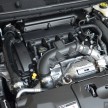









AI-generated Summary ✨
Comments reveal mixed experiences with the Peugeot 308, highlighting significant reliability issues such as oil leaks, cooling coil leaks, timing chain problems, and high maintenance costs, which lead some owners to regret their purchase. Many mention poor after-sales service and costly repairs, affecting resale value. On the positive side, some owners praise the car’s design, interior quality, and features, considering it a competitive alternative to German or Japanese brands. Comparisons with other vehicles like VW Golf and Japanese cars often favor Japanese reliability and lower ownership costs. Overall, sentiments are divided: enthusiasts appreciate its design and performance, while many focus on reliability concerns and high maintenance expenses. Several comments advise thorough research before purchase, emphasizing that reliability varies among owners.